- +212 698 193 183
- info@specialmorocco.com
Hidden Treasures Of Morocco
12- Days / 11 -Nights
TOUR Overview
The enchanting culture of Morocco comes to life on your custom tailored Morocco tour for seniors, focusing on the most exciting way to experience the country for those in their golden years. Sand dunes rise like mountains and stretch over the horizon. Columns of a former Roman city rise over the citadel. Snake charmers play their flute-like instrument surrounded by crowds of entertainers. The mountains separate the Sahara from the Atlantic. An eclectic mixture of cultures, from nomadic tribes to French colonialists, has made their mark on the heritage. Wander through elegant palaces and explore twisting paths encircling adobe huts
highlights
- Explore the dynamic streets of Fes on a guided tour through the old and “new” neighborhoods
- Discover the heritage and culture set deep in Berber villages and towns, including the town of Sefrou
- Witness the stunning remains of the Roman city of Volubilis outside the former imperial capital of Meknes
- Traverse the desert landscape on a guided tour around the breathtaking sand dunes of the Sahara Desert
- Relish in the vibrancy of the culture around the charming streets of Marrakech’s medina, filled with lavish shops and welcoming boutiques
- Walk along the base of the 1,000 feet high walls of the Todra Gorge
- See the largest minaret in the entire world at the Hassan II Mosque in Casablanca
included / excluded
- Accommodations
- In-country transportation
- Some or all activities and tours
- Expert trip planning
- 24x7 support during your trip
- Shopping Cost
- Travel Tax
- Personal Exprenses
- Speed Money
- Insurance
itinerary
Day 1 : Casablanca
Casablanca is a bustling city on the Atlantic coast of Morocco. Wide avenues pave the city center, lined with the rustling leaves of palm trees. In Place Mohammed V, neo-Moorish government buildings border the square. Elements of a French colonial past shimmer against the contemporary culture of art galleries and seaside cafes. Your private transfer greets you at Mohammed V Airport and takes you to your hotel situated in the heart of the vibrant city. The art nouveau architecture of the Theatre Rialto lights up the corner of Rue Mohammed El Qori. The sea breeze carries a sweet aroma. You can see the towering minaret of Hassan II Mosque rising over the shoreline, more than 656 feet in the air. When you arrive at your hotel, you have a friendly welcome from the staff and an offer of mint tea to help you settle into the city.
Suggested Accommodation: Art Palace Suites & Spa (5*****)
Meals : Dinner
DAY 2 :Capital Elegance
After a few sips of comforting green tea flavored with hints of saffron in the morning, you remember the exotic elements of Casablanca that surround you. Your guide meets you at the hotel lobby and takes you on the first of many Morocco tours, beginning with exploring Casablanca before venturing north to the calm and graceful streets of Rabat. The city has roots as a Barbary pirate port from the 16th to the 18th-centuries. Today the city has a charm emanating from its wide avenues, historic fortress, stunning museum, and remarkable tombs. The colonial architecture creates a gem of a city that allows you to explore at your preferred pace.
Authentic boutique shops wind through the Kasbah les Oudaias, the oldest part of the city. The citadel has a commanding view of the encircling landscape, most notably from the 12th-century Bad Oudaia gate, which faces the heart of the city. The Bou Regreg River feeds into the Atlantic. Cobblestone walkways twist and turn around the beige brick structure with fortified battlements. The collection of palm trees provides luxurious shade in the warm sunlight of the Moroccan coast. Whitewashed homes line the narrow streets inside the kasbah. The serene city provides great insight into the true cultural history of Morocco
Suggested Accommodation: La Tour Hassan Palace (5*****)
Meals : Breakfast, Lunch , Dinner
DAY 3 : Collecting Roman Images
At breakfast, you find the alluring aromas of green tea steeped with mint and honey. The local semolina pancakes have a fluffy texture and an accompaniment of butter, honey, and fresh preserves. Your guide greets you after your meal and leads you on a fabulous tour of the imperial city of Meknes before venturing to the fertile hilltop to find the partly excavated Roman city of Volubilis. The ruins date back to the 3rd-century and offer insight into the Roman occupation of North Africa. A circuit of walls expands more than one-mile along the 100 acres of the cityscape.
Foothills border the prairie. Columns and outlines of stone buildings continue to decorate the landscape. The stonework of the Arch of Caracalla stands at the end of Decumanus Maximus, the main street. The architects used the local stone to erect the monument. Walking through the site takes you on an easy trip back to the city’s heyday. Various houses contain mosaics undisturbed by time. The House of the Athlete has a mosaic depicting an athlete riding a donkey backward. He holds a cup in his hand, with his arm extended as if in salute to passersby.
Suggested Accommodation: Hôtel Tafilalet & Spa (4****)
Meals : Breakfast, Lunch , Dinner
DAY 4 :Colors of the Markets
In the morning, the medieval city of Fes stirs. The roots of the old city date back to the 6th-century but the labyrinthine streets have wound their ways between the stone walls and underneath craft workshops since the 9th-century. The marketplace brims with activity emanating from the tanneries. The cultural heart of Morocco beats strongest in Fes. Locals linger in cafes hidden by narrow alleyways. The iconic image of the souk (marketplace) comes alive when you see the stunning colors of the variety of spices stacked in front of a shop stall.
You set an easy but excitable pace through the city streets, eager to absorb the beauty all around you. The Medersa Bou Inania was erected in the 14th-century. The religious school is an architectural treasure that highlights the splendor of geometric design and the majesty of Islamic artistry. Geometric patterns decorate the walls and court. Keyhole archways and lattice windows provide easy access to constantly flowing air. You can see the crown of the green-tiled minaret hovering over the courtyard.
Suggested Accommodation: Riad Fes – Relais & Châteaux (5*****)
Meals : Breakfast, Lunch , Dinner
DAY 5 : In and Around Fabulous Fes
The mornings are relaxing and allow you to prepare for the coming day. At breakfast, you find flavors both familiar and exotic, accompanied with the subtle aroma of green tea steeped with orange zest. After your exploration of Fes’ “New City,” known as Fes el Jedid, your guide leads you to the Berber town of Sefrou. The town is located about 22 miles southeast of Fes at an altitude of 3,000 feet above sea level. Traders have stopped here en route from the Sahara Desert to the Mediterranean Sea for centuries, creating a mixture of cultures since the 13th-century.
The town once hosted one of Morocco’s largest Jewish communities as well. The Mellah, the Jewish neighborhood, continues to line the northwest riverbank. Wooden-galleried homes line the pathways and streets enclose to a narrow peak to fit only two pedestrians at a time. The allure of Sefrou is its medina, with a wide-open lane leading through its center. The vibrancy of the small town radiates along the marketplace, which is smaller than in Fes, but remains in touch with its eclectic heritage.
Suggested Accommodation: Riad Fes – Relais & Châteaux (5*****)
Meals : Breakfast, Lunch , Dinner
DAY 6 :Alpine Forests and the Sahara’s Edge
In the morning, you indulge on the comforts of the tea at breakfast. The tinkering of carpenters and cobblers returns with the sunlight. The sounds of trickling water from the Funduk Nejjarine, a sensational historic fountain, continue to drift through the streets. Your guide once again meets you in the hotel after breakfast and leads you away from the imperial city, making your way east to the Middle Atlas Mountains en route to the Merzouga, the Gateway to the Sahara. You stop in Midelt, a small market town in the alpine landscape at the heart of apple country. The peaks of the High Atlas Mountains perforate the sky in the distance.
Kasbah Myriem is a workshop that helps assist Berber women in developing their embroidery and weaving skills, along with providing looms and materials. The stone building looks quaint with the imposing background of the mountains. Inside, women sit near woven baskets or on wooden chairs focused on their work. The more experienced women help instruct the newcomers with advice and support. Outside of town, Berber apes, North Africa’s only monkey, lounge in the forest trees.
Suggested Accommodation: Chergui Luxury Camp
Meals : Breakfast, Lunch , Dinner
DAY 7 : Famous Dunes of the Desert
Morning in the Merzouga is filled with excitement stemming from the coming adventure into the Sahara. You step aboard a jeep with your guide and travel into the sweeping golden sands of the Sahara Desert. The dunes rise and fall like waves. Merchants and caravans used to travel the route to Timbuktu beginning in the 8th-century. The desert sun is warm but the cool air provided by the jeep is comfortable. In the distance, you can see a man leading a herd of camels; their feet kick up sand as their bodies sway from side to side.
Erg Chebbi is a collection of sand dunes stretching more than 30 miles with some dunes rising to 492 feet. You make your way towards your luxury campsite for a night under the stars accompanied by your gracious Berber hosts. The sunset turns the golden sands a fiery orange. Your guide leads you the entire way to your accommodation, where a comfortable and safe campsite awaits.
Suggested Accommodation: Chergui Luxury Camp
Meals : Breakfast, Lunch , Dinner
DAY 8 : Walls of the Todra Gorge
Wake up at dawn to watch the colors of sunrise spread over the Sahara. Witnessing the sand dunes slowly glow with a radiant luster as the sun begins its ascent into the sky is a sight worth seeing at least once in your lifetime. You return to the border of the desert at Merzouga and continue northwest into the Todra Gorge. The village of Tamtattouchte stands at the base of the rolling mountains. Adobe huts almost blend into the changing colors of the landscape. You can see the towering rusty red walls of the gorge, reaching upwards of 1,000 feet, lingering behind the verdant palm groves and lush grasses of the oases in the foreground.
Barren, craggy mountains roll away from the canyon walls. The gorge narrows to a width of 30 feet. The stunning natural landscape is undeniable. The aroma of tagine, a traditional slow cooked savory stew, drifts from homes. You can hear the rushing water of the glacial stream winding along the gorge floor. You can sit near the water’s edge and savor the flavors of lunch in the pure beauty of your surroundings.
Suggested Accommodation: Chergui Luxury Camp
Meals : Breakfast, Lunch , Dinner
DAY 9 : Stopping for Tea and Roses
The western road to Ouarzazate is known as the Road of 1,000 Kasbahs. You depart from the town of Tinghir, making your way through Dades Gorge. The colors layer the rocks from top to bottom with red, white, pink, and orange hues. The earthen formations are scattered across the landscape with bright red coloration and rugged karst size. Your guide points to the troglodyte caves inside the mountainsides, which are still used by Nomadic herders. In the villages along the route, you can see locals stopping in small cafes and shops, drinking tea with one another. The scenic drives takes you through the Valley of Roses.
In the morning and afternoon, flower pickers stroll through the miles of pink hedges producing garlands of fragrant roses. The flower buds are at their most fragrant early in the morning or late in the afternoon. The ochre turrets of the remote kasbah behind the plantation create a remarkable contrast in lushness and vibrancy. The local pickers hold their harvest in large sacks, walking between the rows of hedges to eventually deliver the sack to a distillery, eager to turn the petals into rose water, rose oil, and potpourri.
Suggested Accommodation: Hotel Riad Ksar Ighnda (3***)
Meals : Breakfast, Lunch , Dinner
DAY 10 : Over Atlas to the Medina
The town of Ouarzazate almost blends into the hills and arid landscape. The rustic red earth used to make the historic buildings of the kasbah continue to stand proud as a testament to the ingenuity and culture of the past. After breakfast, you embark on a scenic drive through the Atlas Mountains. Sporadic roadside villages turn into hair-turn pins. The mountainscape rises above you with snowcapped peaks. Now and again you have an unobstructed view of the valleys below.
The scenery turns from rugged hillsides to sprouting trees. The greenery is noticeable and even casts shade over the road and bordering villages. Once in Marrakech, you settle into the comforts of your riad, a historic mansion, located in the heart of the spirited city. You have time to freshen up before your tour of the old city. The old square of Djemaa El Fna was erected in 12th-century and stands as one of the oldest areas of the city, and holds the entire vibrant heart of Marrakech.
When you visit the square in the evening, local restaurateurs haul their grills into the center of the square, fanning at their coals, and placing kebabs filled with meat or vegetables over the grate. The songs of snake charmers drift over the cobblestones. Storytellers entertain children with tales of their heritage and fantasies evocative of the famous 1,001 Nights. For one of the best views of the square’s encompassing energy, you can sit on one of the many rooftop cafes that offer a panoramic view of the jovial nights of Marrakech, complemented by the comforting warmth of a freshly brewed tea.
Suggested Accommodation: Art Place Hotel & Ryad Marrakech (5*****)
Meals : Breakfast, Lunch , Dinner
DAY 11 : Grandeur of the Old Town
The grace of Marrakech comes from its history and culture, which locals and visitors celebrate daily. After breakfast, your guide meets you, eager to escort you through the enchanting streets of the city, filled with narrow lanes, antique stone arches, and an endless vivaciousness that keeps the culture feeling eternally fresh and new. The Bahia Palace was erected in the late 19th-century and encompasses more than 86,000 square feet. The grounds are decorated with floor-to-ceiling radiance. The back courtyard has colorful geometric mosaics encircling the fountains. Green tiles line the rooftops. Your guide leads you to the harem to see the ornaments decorating the Grand Vizier’s favorite wife’s quarters. Original woven-silk panels and stained glass windows offer an abundance of soft light and graceful movement to the room. Rose bouquets blossom on the ceiling and remind you of the absorbing aroma you found in the rose plantations.
Suggested Accommodation: Art Place Hotel & Ryad Marrakech (5*****)
Meals : Breakfast, Lunch , Dinner
DAY 12 : Endless Morocco
In the morning, the snake charmers and storytellers return to Djemaa El Fna Square. The shop stalls in the souk open their doors, embellishing the walkways of the medina with carpets and dangling footwear. At breakfast, you wrap your hands around a hot glass of fresh green tea steeped with saffron. You listen to the sounds of the fountain cascading in the courtyard of the riad. Your private transfer will soon meet you at the hotel, ready to escort you to the Marrakech Menara Airport for your flight home. Until then, you can relax and savor the rest of your time in Morocco.
Meals : Breakfast
Other ACtivities that can be include
ACTIVITIES IN MARRAKECH
Start your day with a Private Guided Tour at Les Jardin Majorelle, the French painter Jacques Majorelle (1886 – 1962) dedicated forty years of his life to the creation of the luxurious gardens and Berber museum. An amateur botanist, Majorelle included plants from all five continents in the gardens. Marjorelle’s studio, a Cubist style villa constructed by architect Paul Sinoir, has since been transformed into the museum, and is painted a vibrant blue. The garden covers two and a half acres, and was opened to the public in 1947. The garden has been open to the public since 1947. Since 1980 the garden has been owned by Yves Saint-Laurent and Pierre Bergé. After Yves Saint Laurent died in 2008 his ashes were scattered in the gardens. The garden also houses the Islamic Art Museum of Marrakech, whose collection includes North African textiles from Saint-Laurent’s personal collection as well as ceramics, jewelry, and paintings by Majorelle.
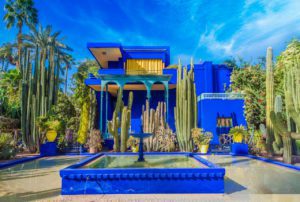
A private visit to the home of the late Yves St Laurent, the Villa Oasis. Yves saint Laurent travelled here each year to gain inspiration for and design his future collections. These inspirations saw him pay tribute to artists in his haute couture collections with the famous Mondrian dresses, then in 1966 with the pop art dresses and in 1967 with his major homage to Africa. In the 1970s he presented his Picasso and Diaghilev collections and tributes to Matisse, Cocteau, Braque, Van Gogh, Apollinaire in the 1980s.
After his retirement Yves Saint Laurent devoted his energy to the activities of the Foundation Pierre Bergé-Yves Saint Laurent, with the mission is to conserve 5,000 haute couture garments and 150,000 accessories, sketches and other objects making up the collection, to organize thematic exhibitions on fashion, painting, photography, the decorative arts, etc., and to support cultural and educational activities.
The Villa oasis still houses many of these collections and this a rare opportunity to gain insight into the extraordinary talent of the designer. The fee for the visit is a direct donation to the foundation to ensure future talents both in Morocco and abroad.
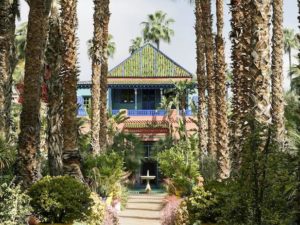
Enjoy a hosted visit by the gallery representatives & curators of the Maison de la Photographie of Marrakech is a courtyard mansion and is a private foundation created by Hamid Mergani and Patrick Manac’h in 2009.
Designed to create an archive of and showcase the diversity of Morocco as it was seen by those who visited it, anonymous travelers or famous photographers, over the last 150 years or so. Of visit is the documentary on Berber life by Daniel Chicault, shot 1956, runs on a loop on the second floor.

Rocco Orlacchio of Voice Gallery offers a private showing as well as a visit to the Atelier of a well renowned Artist in Residence Eric Van Hoven. Rocco sits on the board of the Marrakech Biennale and is the prefect ambassador to shed light on the Moroccan art scene. Voice Gallery showcases local and international, mainly young artists, who come together create and collaborate with each other, extending boundaries and exchanging ideas annuitizing the culture and landscape of Morocco to inspire their artistic endeavors.

An artist’s retreat with a difference, Al Maqam is in the village of Tahanaout in the lower reaches of the snow-capped Atlas Mountains. Al Maqam means ‘The Place’ in Arabicand it serves not only as an artist’s colony but also as gallery, library and a place to stay. There is nothing else quite like it in Morocco.
The painter Mohamed Mourabiti has been setting up Al Maqam for over a decade and now, carefully installing traditional home-wares and local paintings and now photographers, writers and artists flock to the centre to share ideas and inspiration.
On average 100 international artists are hosted a year, and there are regular guests like the painter Abderrahim Yamouand the French writer Michel Butor.
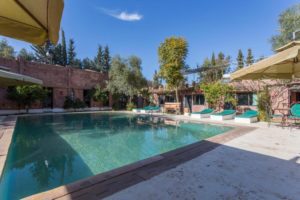
Calligraphy means “beautiful writing” and Arabic calligraphy (or more properly, Islamic calligraphy) is considered a high art form in the Arab world and is increasingly gaining recognition and appreciation worldwide.
Abdeljalil conducts calligraphy workshops to share his passion with others. Whether you ask him about history or more practical information such as the ink or the pens, he will not skimp on precious information that may just leave you speechless. Patient and devoted, he will also teach you how to write the alphabet, your name and help you become familiar with calligraphy. After all, his life motto is “Make a living from a passion”.
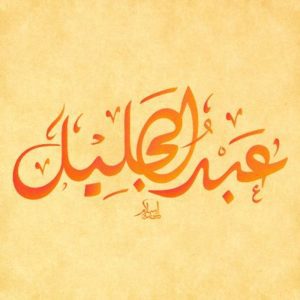
The philosophy is to connect you authentically to the culture, through a tasting trail that is able to deliver through insider culinary access, allowing you to experience the heart of Moroccan culture at its source.
Join local Moroccan foodie experts who are passionate about sharing their culture and culinary expertise with you. The three-hour tour will guide you through the meandering streets of the Medina and Kasbah. Here you will discover mouth-watering delicacies that most travelers would not have access to. En route, you’ll experience a wide range of tastes, a variety of active ancient communal cooking facilities, and the how’s and why’s of food sourcing and preparation.
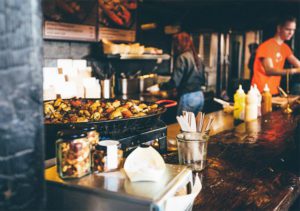
Private Cooking Lesson is at Le Maison Arabe. The workshops are conducted by a dada (traditional Moroccan cook) or a chef from our Moroccan restaurant, using easy-to-use modern equipment found in everyday kitchens. At the end of each workshop, participants dine on the meal they have prepared. At a typical half-day workshop, one learns to prepare an appetizer and a main dish, or a main dish and dessert.

The cooking class takes place in the Amizmiz Valley, populated by Berbers who still stick to their traditional way of life. Just a short ride from Marrakech this valley has been little affected by tourism. His elegant eco-farm is set amongst 15hectares of olive groves, vegetable gardens and orchards in a traditional Berber hamlet with the imposing silhouette of the High Atlas Mountains dominating the landscape. He will teach you how to utilize herbs and spices as well as prepare a typical Moroccan meal including bread making Moroccan style
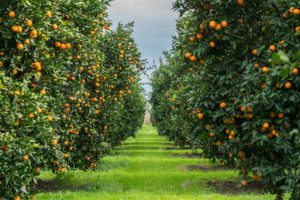
Tasting Marrakech is a tailor-made food and cultural experience that takes place in the famous Jemaa el Fna square in the company of a state-approved guide and a foodie expert. The tour is private and customized to your appetite and palate. Dine with the locals while sampling regional specialities at the most popular food stalls in the market while soaking up the night-time ambiance in the famous square.
Once you have had the opportunity to try the various street foods, we then take over a local restaurant close to the Jma El Fna and re-create what we’ve tried en route!

Spend some time in a small village and experience the countryside first hand. Learn some of the daily tasks from baking your own bread, learning to make your own tagine, cooking on coals, milking the goats, going for water at the well and making mint tea.
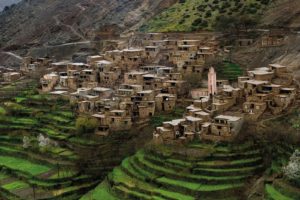
Start your day trip with a wine degustation at Val Du Argan, one of the leading wineries in the south of Morocco.
Moroccan-French born Charles Mélia, owner/winemaker, moved to France to manage his family’s property in Cotes Du Rhone at young age before turning back in his late 40’s to make wine in his motherland. His vineyard began with five tentative hectares planted in 1994 and now extended to 40, and still remains the only winery situated on the southern coastal part of Morocco. His boutique wines are now a reference point for the Moroccan wine industry.
Following the wine tasting stop en route for a cheese tasting and lunch at La Fromagerie where Jaouad Hbib and Abderrazzak Khoubbane run a seriously good dairy. The cheeses are made from old Berber techniques and each cheese reflects the unique vision of the farm in offering bio-made produce at high quality levels.
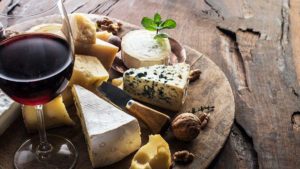
Ride a vintage side car through the lively alleys of the medina, venture across the mythic palm grove and encounter small villages or rally the ville nouveau, whichever your choice this is a fun and exciting way to explore a secret Marrakech not normally accessible on foot. Our rides start from 1.5 hours through to half or day tours and we’ll tailor make the experience to you! Your motorbike will be either a Ural, an authentic Russian knock off of the 1938 BMW R71 or a Mash and seat 1 driver and up to 2 passengers per bike, one on the back, one in the sidecar – but whichever seat you’re in you’ll discover Marrakech from an unusual point of view”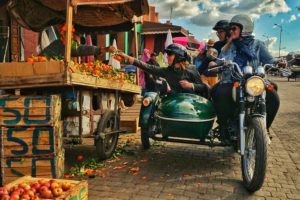
Drift gently over the fantastic desert landscape and capture the sunrise while floating over secluded Berber villages and the snow-capped Atlas Mountains on this magical balloon flight. Rides are available with groups or can be arranged privately with champagne breakfasts following the flight for that extra special occasion.

Adventure and fun at its best – half day of dune bugging in the oasis palmary of Marrakech. Enjoy a relaxed introduction to quadding alternating the soft, dried silt plains of the palmgrove with simple river crossing (in case of rain) and winding trails through lunar landscapes on the outskirts of Marrakech. Catered for beginner to experienced riders we can adapt the level that’s right for you. Choose from shorter rides through to half or full day excursions on the latest Quads and buggies.

Enjoy a fantastic experience with gentle and well-trained horses riding through the local Berber Villages. All levels are catered for as the guide will adapt to your riding experience.
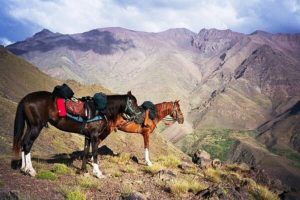
Only an hour south of Marrakech, the Mizik Pass is a wild and totally undeveloped crossing between two populated valleys situated within the Toubkal National Park at nearly 2000m above sea level. A steady hike up through juniper forests offers spectacular views over the Berber dwellings of Imlil, the Tamatert Pass and up to the Tacheddirt Pass and the top of the ski slopes at Oukaimeden, the highest ski resort in North Africa. On your descent you’ll start to experience the villages in the picturesque valley of olive groves where the rapid change in vegetation creates vibrant strips of cultivation close to the water source.
A picnic lunch will be freshly prepared for you at AzibTamsoult – a cluster of shepherd huts used by villagers and their flocks during the summer period. From here you’ll walk on a network of picturesque paths through the village of TiziOussem and down towards the village of Aid Aissa.
Today’s hike takes around six hours of walking to arrive at your final destination of Imlil at the base of the National Park and foothills of the High Atlas Mountains.
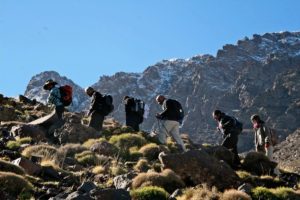
The Moroccan tradition of Hikayat, or storytelling dates back almost 1, 000 years. Some stories were recorded and other stories are passed orally. This form of entertainment was found in cities throughout Morocco but today Marrakech’s Jemaa El Fna square is the only city that’s keeping this tradition alive. This evening enjoy a private session of this dying artin the comfort and peace of your hotel with the master Storyteller Ahmed Ezzarghani in both Arabic and English before dinner.

Whether it’s a romantic ride or fun for the family Caleche horse drawn carts are a great way to see the city, particularly at sunset when the colors against the red ochre change dramatically. Tours can include the medina remparts, Agdal or Marjorelle gardens and even the palmeries where a delicious evening dinner picnic can be arranged amongst an exotic backdrop.
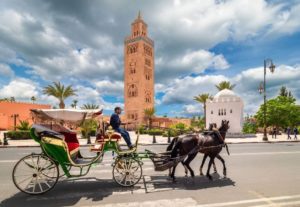
Unlike the dunes of the Sahara Desert which take hours to reach, the Agafay with its stony hamada style desert offers a stunning landscape to relax, unwind and watch the setting sun – you’ll feel a world away from Marrakech even though it’s only a 45-minute drive. A gorgeous dinner in a camp setting with traditional musicians and campfires, overnight stays and daytime activities can all be arranged for those seeking a desert like experience without the long travel.
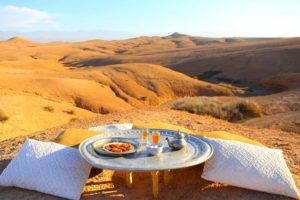
A perfect way to unwind after a day of sightseeing, Les Bain des Marrakech is one of the first private Hammam’s in Marrakech and remains one of the best. Located in the medina from the moment you arrive when exotic scents fill the air, you’ll be pampered and made to feel like new with their sumptuous spa and massage packages that range from basic through to the ultimate luxurious spa experience.
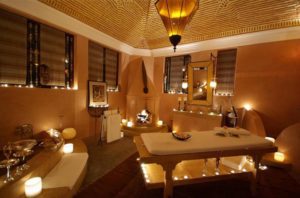
Head this morning to visit the village of Imlil at the base of Jebel Toubkal. Choose to explore on foot or by mule to visit some of the surrounding Berber villages to look at some of the working co-operatives. These co-operatives, set up through independent and government funding allow the women of the region to support themselves and be sustainably independent, as well as providing the opportunity for literacy education. Experience traditional rural life with local women and roll your own Couscous then enjoy the meal that you will all share together in a true Moroccan style.
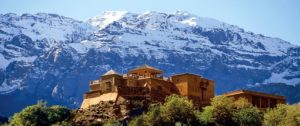
A perfect way to unwind after a day of sightseeing, Les Bain des Marrakech is one of the first private Hammam’s in Marrakech and remains one of the best. Located in the medina from the moment you arrive when exotic scents fill the air, you’ll be pampered and made to feel like new with their sumptuous spa and massage packages that range from basic through to the ultimate luxurious spa experience.
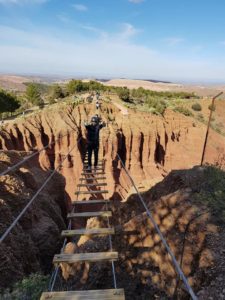
Earlydeparture from Marrakech heading to the direction of Damnate and its beautiful fields of olive trees. After driving towards the natural bridge of ImiNifrid you will stop for a mint tea and enjoy the view. All this road is unique by its greenish valleys and amazing scenarios. You will have plenty of chances of taking photos. Visit of a traditional water mill in the region. Berber lunch near the waterfalls. Return to Marrakesh in the evening after a wonderful day out of Marrakech.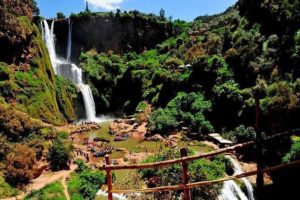
Situated on the Atlantic coast 2.5hrs from Marrakech is the laid-back fishing village of Essouira, famous for its Gnaoua music and artistic scene. Many local and foreign artists have settled here continuing the vibe that attracted visitors such as Jimmy Hendrix and Cat Stevens (Yousuf Islam) in the 1960’s.
Once an old Portuguese fishing village, Essouira is a perfect place for those who wish to wander the souks for wooden carvings that it is famous for, to stop and enjoy fresh seafood and local wine whilst watching the fisher men come in with their daily catch. For a more active alternative the kite and board surfing is excellent here and there is horse riding, camel riding and golf available. 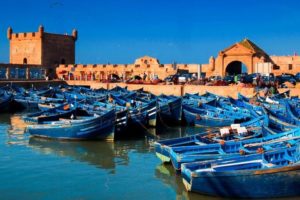
ACTIVITIES IN Fez
Experience the energy and essence of Fez as it comes to life after dark. Fez by Night tour reveals the captivating appeal of the medina and Ville nouvelle, and the vibrant life that exists within this traditional city. Start from Bab Boujloud, to the Jewish Mellah and through the gold souks to the Kings Palace. Promenade along the boulevards discovering the famous fountains of Fez and soak up the festive atmosphere of Fassis enjoying their own city after sunset.

Lose yourself in the gardens of ancient palaces and exotic Riads perfumed with orange blossoms, citrus, blood red roses and the sweetest jasmine. The tour combines an overview of the fascinating and beautiful world of Moroccan Architecture which showcases all the main ornamentation and decorative techniques from floral motifs, geometry, ceramics to calligraphy, symbolic of the rich cultural heritage of the vast Islamic empire and uncovers the mysteries of the Islamic concept of Chahar-bagh, the four-fold garden and leads us to discover earthly paradise revisited.
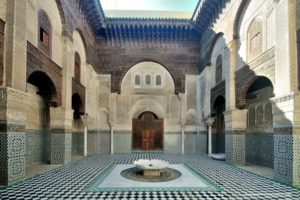
This morning enter into the depths of the tanneries, observe weavers at their loom, engage with the copper workers employing traditional design techniques and discover hidden workshops where generations of artisans ply their individual trades and adapt century old techniques to a modern market. This artisanal tour is designed to give you an overview of production methods and step by step explanations as you go beyond the traditional medina tour to delve deeper into the world of the artisans of Fez. Meet the artisans themselves as you gain firsthand knowledge of the materials and the processes involved in their daily work. The tour finishes with a visit to Fez’ new artisanal school and exhibition gallery
Morocco is home to one of the oldest Jewish communities in the diaspora. It dates back to 2000 years. Its singular Jewish culture is the result of a fusion of varied traditions including Berber, Herbatic, Andalusian, and Arab influences. Fez, the spiritual and cultural capital of Morocco par excellence, leaves its visitors with a unique experience. Fez is the home of Al-Qarawiyeen University the oldest one in the world, where the famous Jewish philosopher Maimonides (Rambam) studied. It is also where the first Mellah, Jewish quartier in Morocco, was established in 1438. This journey to Jewish Fez takes us into a history that shaped Sephardic Judaism, visiting its synagogues, cemetery museum, and taking a walk in its street that once witnessed the presence of the Jewish families and grand rabies, will remind us not only of how Moroccan life was/is like, but also of how was Jewish life in Spain before the expulsion of 1492, as Fez was destination of many of those Jews. Today there is still a small, but vibrant, Jewish community in Fez with a functioning synagogue, kosher restaurant and a community center.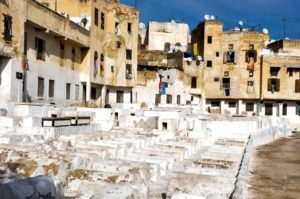
Morocco is a place where music plays a large part in celebrating religious festivals, marriage and birth. Drums are seen and heard everywhere in Morocco and Fez is the place to make them.
We invite you both to spend a morning in a typical Fondouk(traders workspace) under the watchful eye of a drumming artisan teaching you how to make your own drums. You choose the sound of drum you prefer, pick out the skin, stretch and string your own instrument before painting it in your very own individual design. Finally a professional drummer will teach you how to play the drum Moroccan style so you can impress family and friends on your return. 
One cannot but help notice the different fashions that adorn the streets of the medina, from the western style dress to the more traditional kaftan style jelabas worn by men and women. This afternoon you will be accompanied by a seamstress through the dress makers’ souk to choose a celebratory kaftan design. You will need to select your materials, threads and beads from the vast array available in the souk and with your design prepared, have the perfect his and hers kaftans made for you – ready for collection the following day!

Dance is integral to the culture in Morocco, far more so than it is in the West. Both men and women dance, but it is mainly something done by women. It’s a way of women sharing and being together, and displaying themselves in public in a way they don’t usually do in ordinary life. It is joyous, sensual, and energetic, and is performed mainly at weddings, parties and rituals such as circumcisions and baby naming ceremonies. At these gatherings the women wear beautiful dresses when they dance; long, flowing and colourful, with belts around their waists. Moroccan dance includes aspects of Middle Eastern belly dancing – rotating the stomach is a common element and other styles such as Gnawa (an African ethnic group who became part of the Sufi order in Morocco), where the movements involve jumping and hair tossing and tribal dances from the Amazigh (Berber) regions which vary widely.
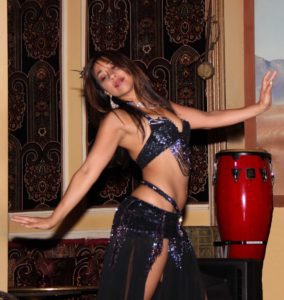
In this modern age of new world cosmetics we invite you into the world of ancient beauty secrets and where it all began. Participate in a 5 hour workshop that unearths traditional methods and natural beauty products that can easily be made in your own home by yourself or with friends. Start your day by shopping at the souk el henna to purchase ingredients and gain an overall explanation of the products that can be made from each one. We move on to our workshop, in a Moroccan Dar on the rooftop terrace, a space traditionally reserved for ‘women’s businesses. Sip Moroccan tea as you learn how to make and blend your own rhassoul and we take you through the traditional products including Argan oil, sabun bildi and eau de fleur with step by step instructions so that you understand the properties of the ingredients, how and why they are used and the benefits they each provide. We finish off the workshop with a visit to a medina hammam so that you can employ the techniques that you have learned and absorb yourself into the rituals and culture of the local Moroccan women

Experience a unique opportunity to connect with locals and be absorbed into Moroccan culture through a visit to one of the traditional hammams in the Fez Medina. We provide a local escort who explains the history, traditions and products and guide you through the steps of this ancient practice. Perhaps finish the day with a “Henna tattoo” for her and “close shaving” for him.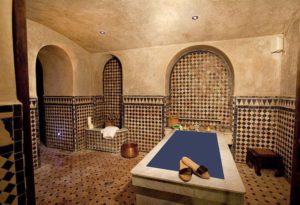
More than traditional Moroccan cooking, this class is a complete immersion into the Moroccan culture and family life. Spending time with our lovely local family in their beautiful riad, you will be encouraged to fully take part in the daily activity of shopping and preparing for a delicious traditional meal. This unique experience will take you to the local medina souk, the bread you make will be baked at the local faran, and your delicious feast will be shared with the family Moroccan style.
Your lesson will entail, shopping for seasonal vegetables and fruit, preserving lemons, making traditional Moroccan salads, bread-baking and the art of making the perfect mint tea – what you make will depend on the seasonal produce and can be decided on prior to your souk visit.
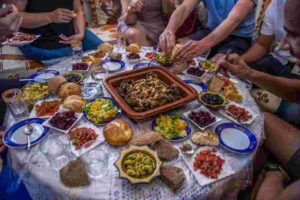
Find your way through the streets and souks with a local Fez food expert. Start by exploring the fresh food souks, then on to the honey souk to taste an array of delicious honeys, their flavours and properties and find out why honey is so important in Moroccan cooking and Islamic culture. From the honey souk, visit traditional farnatchis, the spice El attarryia and the henna souk. Try traditional Moroccan foods including dried meats, milawi, harsha, briwats, spicy sardines, and fresh goat cheese, finishing off with a visit to a traditional Moroccan tea house.
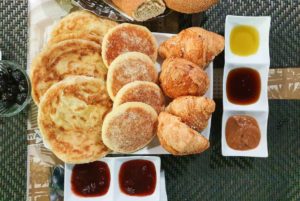
Indulge your sweet tooth and learn how to prepare Moroccan patisseries as well as discovering this important cultural practice. A Moroccan feast is not complete without sweets; in particular, patisseries play an integral role in everyday life in Fez. The ancient city is famous for its diverse and traditional sweets with a multitude available every day at the local souks. Spend the day with a Moroccan family to prepare 4 to 5 different traditional Fassi Moroccan sweets.

Here we begin to head away from Fez and out East to Ribat El Kheir. Enjoy the beautiful scenery of the Atlas foothills en route to get to the town surrounded by mountains and lush agriculture.Start learning the secrets of a good Moroccan couscous while at the same time experiencing traditional rural life. Visitors roll their own couscous from scratch with the women of the association and then cook and eat it for lunch. After lunch take a walk along the ridge to see the donkey-powered olive press and have mint-tea and an olive oil tasting with the owner. In the afternoon head back to Fez.
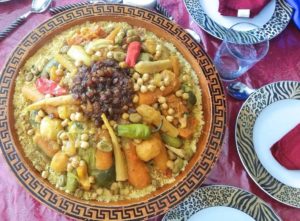
Depart Fez for the Middle Atlas Mountains to visit one of Morocco’s leading boutique fromagerie’s, La Pommerai. The private property is one of the first to be officially certified organic in the region and is set against a backdrop of apple and orange orchids. Taste exquisite, hand-crafted and artisanal cheeses and olive oils which are cold pressed as well honey raised and processed into a variety of pure honey. Here we’ll have a Dada on hand (female cook), who’ll be teaching us how to make khobz(Moroccan bread) in a traditional clay faran. A delicious meal of farm produce will be served, along with our own homemade breads and the local cheeses.

Mount Zalaghs’ peaks and slopes can be easily seen from Fez Medina and yet whilst only half an hour travels by car, the tranquillity and natural beauty of Mt Zalagh is a world away from the bustle of Fez. Short treks will take you through surrounding forests of pine, cedar, fig, almond and olive orchards to visit local homes and farmsteads. Here you will experience not only the warmth and friendliness of this mountain people, but also see the beauty and simplicity of the traditional Berber adobe/pise architecture. A picnic lunch will be provided, Berber style, and we have no doubt that this will prove to be a most memorable excursion to a world so near and yet so far from the Medina of Fez.
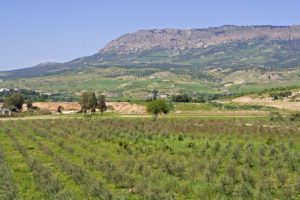
This morning depart for Fez via Moulay Idriss and the ancient Roman ruins of Volubilis, a day spent in the past, seeing ancient architecture and eating age old recipes, a feast fit for Anthony and Cleopatra themselves! Find beautiful mosaic floors, uncovered and brought to light by the archaeologists that work this partly excavated site. It was developed from 3rd century BCE onwards as a Phoenician and later a Carthaginian settlement. The town fell to local tribesmen in 285 and was never recovered by the Roman Empire. Constantly uncovering this city beneath the sands of time, now exclusively a Moroccan project runs by Moroccan archaeologists. Following a tour of this stunning historic site from the 3rd century BC and its many intact and colourful mosaics, enjoy the tranquillity of a local farm in the shadow of the ancient ruins while sampling traditional Roman recipes as recorded in the Latin texts of Apicius and Cato.
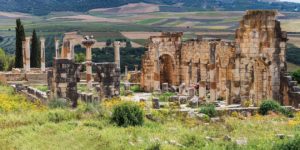
This morning cycle towards Bhalil, a tranquil town is located at the foot of the Jebel Kandar which offers visitors spectacular views of the town and the landscapes surrounding it and is most notably known for its modern day cave dwellers. (Option exists here of organizing morning tea with locals). From Bahlil we move on to Immouzer, particularly beautiful in spring with apple blossom and a lively place to be in July with the Pommes de Fete. Becoming increasingly known as a region for cheese production we’ll stop off at La Pommeraie. The private property is one of the first to be officially certified organic in the region and is set against a backdrop of apple and orange orchids. The cheeses here are exclusive to Morocco’s leading luxury hotels & restaurants. Here we’ll sample the cheeses and enjoy a BBQ lunch before setting back to Fez.

The Middle Atlas region offers many hidden delights including spectacular views of cedar and cork forests and delightful & hilarious Barbary apes. A short hike into the cedar forests with a mountain guide to participate in the Monkey Watch programme. Enjoy the crystal air of the mountains while you discover the rustic Berber towns of Immouzer, Ifrane and Azrou.
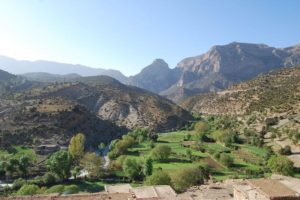
our vehicles
Contact us
enquiry@specialmorocco.com
07 rue Tarablous, QI 80000
AGADIR, MOROCCO

+1 763 219 8777 ( US )

+212 698 193 183 ( MOROCCO )
enquiry
[metform form_id="488"]
Some tour frequently asked questions
Intrepid adventures are for travellers with a yearning to get off the beaten track. Whether you’re travelling solo, with a group of friends, or are aged 18 or 70, there is an Intrepid adventure to suit
Good things come in small packages, which is why we keep our group sizes down. This means we’re small enough to remain flexible as we thread our way
For the majority of our trips the minimum age is 15. An adult must accompany all children under the age of 18. Our Overland Adventures have a minimum age of 18.
While we can’t tell you who your leader is prior to departure, we can tell you they will be awesome. Our leaders are experts in their regions, some because they’ve been travelling

